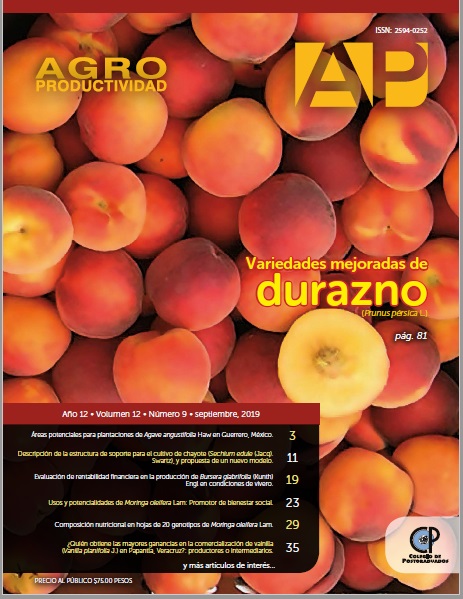Description of the support structure for the crop of chayote (Sechium edule (Jacq). Swartz), and proposal of a new model
Main Article Content
Keywords
innovation, assemblage, mini-tapanco, posts, chayote production.
Abstract
Objective: Verify the tapanco’s structural strength when producing chayote, which gives footsteps to innovate for an original installation that should accomplish functionality and ease handling for crop management. It should include a design for a unique pole for substituting the wood’s poles.
Design/methodology/closeness: Review construction stages, the required items and processes for raising the tapanco. Look into early designs, which are a copy without major changes from close by installations. Identify those challenging areas according to design and structural strength. Formulate innovations on the construction and upright support units.
Results: Stability of traditional construction is granted to the entire outer limits line. A modular construction is grouped by a succession of small modules; their minimum size should be able to cover a single chayote’s plant, capable of resisting a volume of foliage generated from a sole plant and its potential production of fruits.
Constraints on this study/breakouts: The alternative support pole has been designed and when manufactured it should profile just one piece. A production factory that handles polymers is making a feasible assessment to manufacture the poles and its final cost.
Findings/conclusions: A modular structure is ease to assemble; load is distributed into segments, stability is not affected and the production plot can be enlarged by bringing together one or several modules, just bordering an origin module and size from an irregular land is optimized. Benefits of modular tapanco are associated to using the novel support pole.

